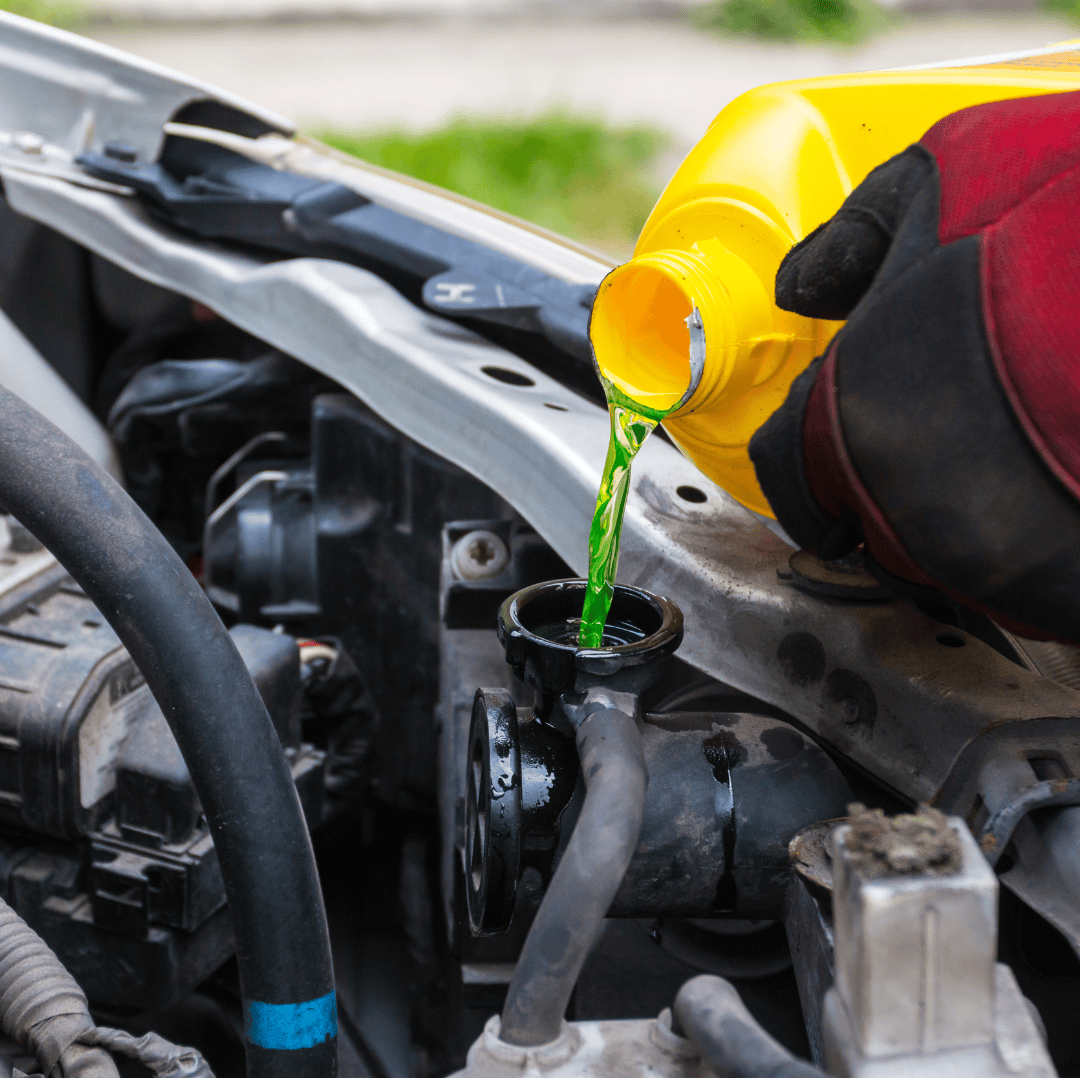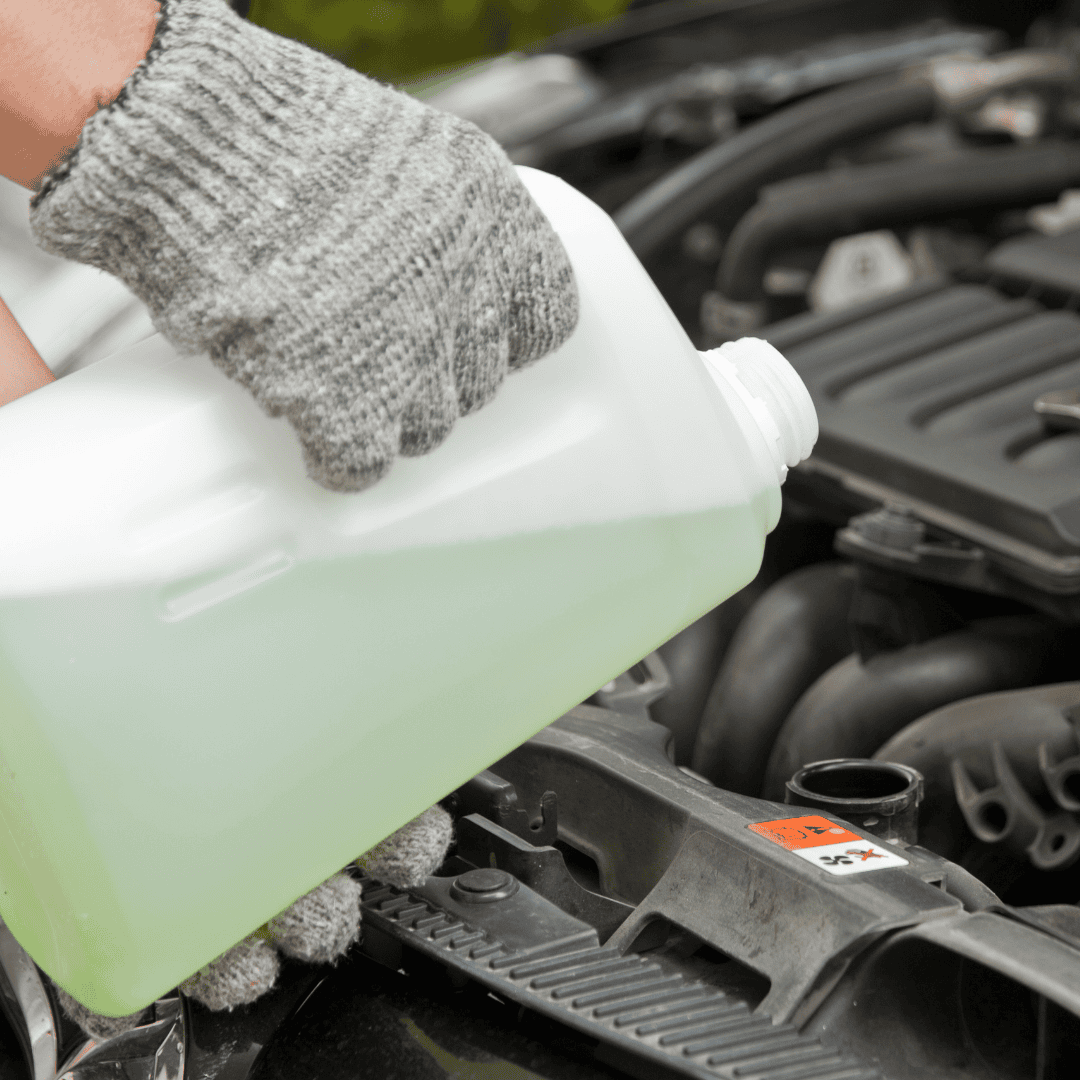>
Blog>
What coolant should I use in my car?What coolant should I use in my car?
There are so many types of coolant that it can be difficult to know which is the best coolant to use for your car. Not to worry, in this post, we explain all there is to know about coolant and how to find what coolant to use in your car.
How many types of coolants are there?
There are three main categories of engine coolant: Organic (OAT), inorganic (IAT) and Hybrid (HOAT).
Deciding which one you need for your car can depend on both vehicle age as well as a use case.
Organic Coolant - Organic Acid Technology (OAT)
Traditionally used in older cars, this antifreeze uses organic acids as corrosion inhibitors. These prevent bare surfaces in your engine from corroding in normal use.
Organic corrosion inhibitors last a long time before breaking down. This means they can be left for longer periods between coolant changes. They are often a shade of orange, pink or red.
Since 1998, almost all car manufacturers stopped using OAT coolants in their vehicles, instead opting for Inorganic versions.
Inorganic Additive Technology (IOAT)
These use Silicates to prevent corrosion. They are an inorganic (synthesised) additive that protects both iron and aluminium surfaces very quickly.
A downside of IOAT coolants is their shorter lifespan compared to OAT coolants. They need to be changed and flushed more regularly.
IOAT coolants are traditionally Blue or Green, the aim of this being that they are not as easily mixed up with OAT coolants.
Hybrid Organic Acid Technology (AHOAT)
As the name suggests, these use a special combination of both organic and inorganic rust inhibitors to provide both long service life, and excellent corrosion resistance.
This coolant is not to be confused with Hybrid vehicles that use both electric and battery power, typically the presence of an electric motor has no effect on what coolant the internal combustion engine needs.
Toyota is well known for specifying hybrid coolants in its cars, with both pure petrol and hybrid powertrains.
Colours of hybrid coolants vary with the manufacturer, it is recommended that unless you are sure the current coolant is a HOAT type, you flush the system before adding a hybrid coolant.
Which coolant should I use in my car?
To be 100% sure you are using the right coolant, check your owner’s manual for the recommended coolants. As mentioned above, the right coolant depends on the age, construction and even manufacturer of your car.
If you use a different coolant than the recommended one it might cause undesired effects. And in some cases, it could even void warranties or finance agreements.

Can I put water in my radiator?
No. It’s not a good idea to put water in your car. It's a common misconception that pure water is sufficient for a modern engine. The two main reasons are cold temperature performance and rust prevention.
Freezing
The most immediate problem is that in climates that drop below freezing, the engine can suffer serious damage if the water inside freezes. Water expands when it freezes, and plain water in your engine will easily crack engine blocks and heads and destroy water pumps.
Corrosion
But what if your car will never experience freezing temperatures? Coolant also protects your engine from rust. Whilst the outside of the engine will more often than not be painted, the inside cannot be.
Corrosion getting into the coolant system can block radiators and cause excessive wear to the water pump.
Is nitrite-free coolant better?
Modern coolant technologies have both improved the longevity of engines by protecting them better, and also have reduced the level of harmful chemicals leached into the environment.
Phosphate
This is used as a rust-prevention additive. Often vehicles manufactured in Asia specify phosphate coolants including Honda, Toyota and Nissan.
Using a Phosphate coolant in another brand is unlikely to do damage, as the phosphate itself aids corrosion protection and longevity of the coolant.
Nitrites
Commonly used in older engines, specifically diesel. This coincides with the fact that it is not recommended for use in engines made from aluminium. Older engines tend to be made from cast iron or steel.
Nitrites allow for longer service life in diesel and heavy-duty applications. Most modern Nitrite coolants can be used in modern engines including aluminium ones, as they now contain other additives to regulate the negative effect on the base material.
Amine
Amine is often seen on bottles of coolant, always in the “Doesn’t contain Amine” form, this is because it was found that when reacting with nitrites, it produces a carcinogenic compound called nitrosamine.
For this reason, it has not been found in any coolants since the 1970s.
Borate
Borate is an additive used to regulate pH, this is more of an issue with Inorganic Coolants where Borate will be more common. Organic or Hybrid Organic coolants don’t suffer the same issues of excessive acidity.
However, It’s not necessary to avoid borate, as it is not thought to cause any adverse effects, although if you need to use an inorganic coolant it’s a useful addition
Can I mix different coloured coolants?
Due to the complex chemical mechanisms designed into modern coolants, and the high levels of care needed to keep modern cars happy, it's never a good idea to mix two different types of coolant.

What is the right water-to-coolant ratio for my car?
Most manufacturers recommend around a 40/60 coolant-to-water ratio, in many cases this will protect the engine from freezing temperatures down to -25°C, more than enough for winter in the UK.
To save storage and transport costs, coolant is sold in concentrated form. There are brands available that are pre-mixed, but when most cars take upwards of 6L, it’s much more convenient to use concentrate.
The higher the concentration of coolant in water, the lower the temperature at which the coolant will freeze. This is why the ratio of coolant to water differs depending on what time of year it is and the local climate.
To be sure, check the instructions on your bottle of coolant and work to those guidelines.
Can I mix the coolant with tap water?
Whilst commonly done, it’s not a good idea to mix tap water with coolant. It's recommended that coolant is mixed with demineralised water.
This prevents any chemicals in the tap water from interacting with the coolant. Some brands of coolant have modifiers built in to allow for this, though. It’s best to check the label on your brand of coolant.
How do I check my car’s coolant level?
It doesn’t matter which coolant you use if it has run out. To check the level, first, locate the expansion tank in your car's engine bay.
Warning: Never open a coolant tank, expansion tank or radiator cap when the engine is hot. Allow to completely cool. Serious burns could result if the coolant is still hot and therefore pressurised.
These are usually small plastic, translucent bottles with a plastic black or blue cap. If you’re unsure, consult your car's owner’s manual. To check the level, observe where the water line is through the side of the bottle, in relation to the maximum and minimum marks.
Top up with prediluted coolant to the required amount. It is recommended to fill the bottle halfway between the max and min marks, but check your owner’s manual for exact details.
For more information on checking levels, read our guide here.
Pay for your car repairs in monthly instalments
Bumper allows you to split the cost of repairs, services, parts and accessories into monthly payments at no extra cost to you. To apply for a credit limit and see dependable garages in your area enter your vehicle registration and postcode.
Author - Joseph Law
Joseph has been writing about cars for over seven years and writing for Bumper for over two, blending his passion for automobiles with a talent for storytelling.
Joseph has written about engineering and cars for Autozilla, Komaspec, and several engineering manufacturers. When he's not writing or tinkering with one of his five cars, Joseph dreams of owning an Alfa Romeo 33 Stradale.
Related Posts